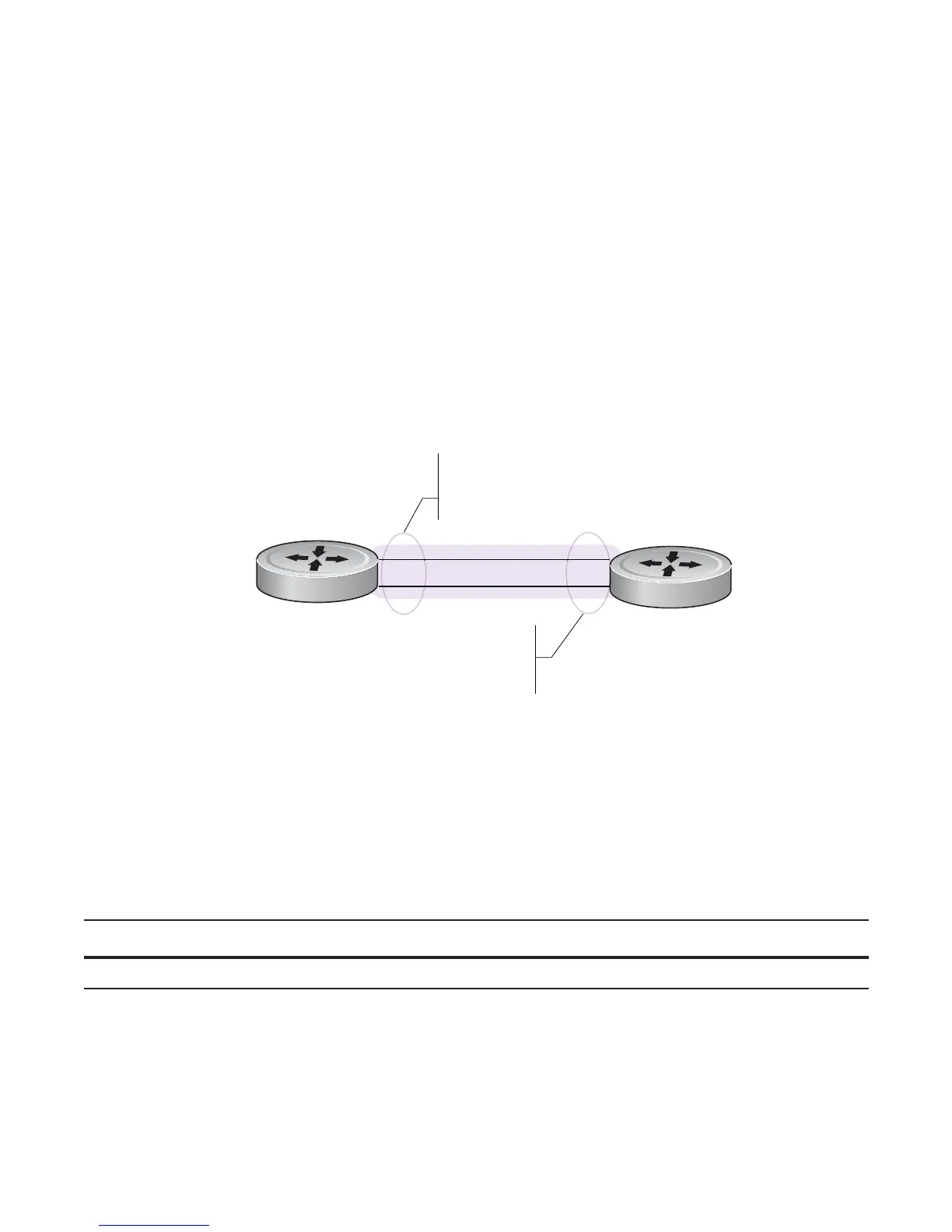170 | Bidirectional Forwarding Detection (BFD)
www.dell.com | support.dell.com
Configuring BFD for port-channels is a two-step process:
1. Enabling BFD globally.
2. Establishing sessions on port-channels.
Related configuration tasks
• Disabling BFD for port-channels.
Establishing sessions on port-channels
To establish a session, BFD must be enabled at interface level on both ends of the link, as shown in the
example below. The session parameters do not need to match.
Disabling BFD for port-channels
If BFD is disabled on an interface, sessions on the interface are torn down. A final Admin Down control
packet is sent to all neighbors, and sessions on the remote system are placed in a Down state (Message 3).
To disable BFD for a port-channel:
Step Task Command Syntax Command Mode
1 Disable BFD for a port-channel. no bfd enable INTERFACE PORT-CHANNEL
fnC0044mp
4/24
FTOS(config-if-range-gi-4/24-5)# port-channel-protocol lacp
FTOS(config-if-range-gi-4/24-5)# port-channel 1 mode active
FTOS(config-if-range-gi-4/24-5)# no shutdown
FTOS(config-if-range-gi-4/24-5)# interface port-channel 1
FTOS(config-if-po-1)# ip address 2.2.2.1/24
FTOS(config-if-po-1)# no shutdown
FTOS(config-if-po-1)# bfd neighbor 2.2.2.2
2/1
4/25 2/2
Port Channel 1
FTOS(config-if-range-gi-2/1-2)# port-channel-protocol lacp
FTOS(config-if-range-gi-2/1-2)# port-channel 1 mode active
FTOS(config-if-range-gi-2/1-2)# no shutdown
FTOS(config-if-range-gi-2/1-2)# interface port-channel 1
FTOS(config-if-po-1)# ip address 2.2.2.2/24
FTOS(config-if-po-1)# no shutdown
FTOS(config-if-po-1)# bfd neighbor 2.2.2.1

